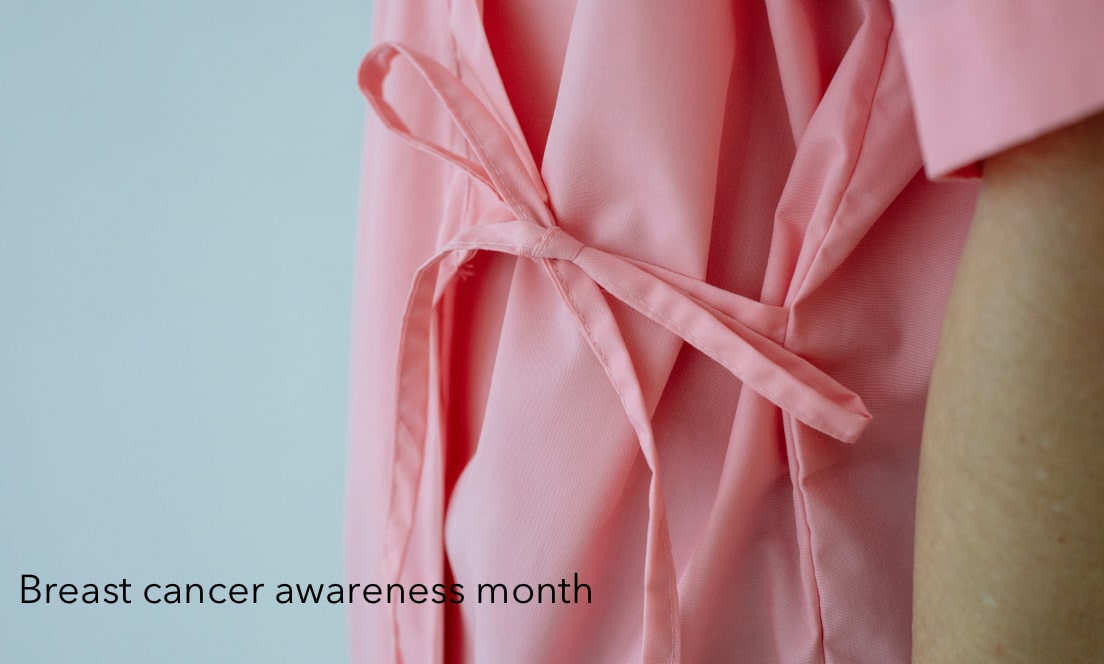Search:
Categories
Archives
Breast cancer
- CURIA
- Oct, 13, 2022
- Family & Friends
- Commentaires fermés sur Breast cancer

Caring for those who care for everyone: all you need to know about breast cancer in women
There has been an alarming increase in the number of cancer cases globally and in India. As per studies, it is the commonest malignancy among women globally, with an estimated 2.3 million new cases. This represents 11.7% of all cancer cases.1 One in twenty-eight women is likely to develop breast cancer during their lifetime. Despite this rising incidence, there is a lack of awareness about the condition, its risk factors and symptoms, which delays diagnosis and timely treatment.
Causes and risk factors
Breast cancer develops from the breast tissue and the DNA changes related to these cells are acquired during the lifetime. The cells grow with the help of proto-oncogenes and their mutation can lead to uncontrolled cell growth. The signs and symptoms include lump in the breast or armpit, bloody discharge from the nipple or inverted nipple, orange-peel texture or dimpling of the breast’s skin, pain or sore nipples, swollen lymph nodes in the neck or armpit, and a change in the size or shape of the breast or nipple.
The risk factors that can exacerbate the likelihood of acquiring this condition are also many. Most cases get diagnosed only after the age of 55 and Caucasian women are more susceptible. Women who inherit a mutated gene from a parent also have a higher chance of getting this condition. Apart from this, those with a history of early menstruation, late menopause, or conception at an older age are also at an increased risk. Today, lifestyle changes are also contributing to breast cancer and include delayed childbirth, lack of breastfeeding, post-menopausal hormone replacement therapy, consumption of alcohol and smoking, eating unhealthy food, among other things. An unhealthy lifestyle is being increasingly cited as a leading cause for breast cancer among women.
Diagnosis and self-examination
It is possible for women to undertake a self-examination of the breasts from time to time and understand whether there is a lump or any other abnormality. To do this, they should stand in front of a mirror and place their hands on the hips. Check the breasts for any discharge, or lumps, even in the black area around the nipples. The next step is to raise one arm and check for any lumps around the breasts. Move from the armpit to the breast and the gap on either side. If there is a lump which seems to increase in size during every self-examination, or other apparent changes such as blood discharge or inward nipple, it is important to contact a specialist immediately.
Screening for this condition is done through a mammogram or breast X-ray. This can help in the detection of breast cancer even two years before a formal test. While a breast exam or mammogram is advised over the age of 40, it is good to start at the age of 30 as this will help establish a baseline. Another test that can help diagnose this condition is the Cancer Antigen-Breast 15.3(CA 15-3). The concentrations of this antigen generally increase as the cancer spreads. This test helps determine the cancer characteristics to monitor the response to treatment of invasive breast cancer and watch for the recurrence of the disease. Along with self-examination, these regular tests are also imperative.
Management
Breast cancer can be treated and managed if it is diagnosed in a timely manner. This is where large-scale awareness is the need of the hour. It is imperative to encourage women to lead a healthier lifestyle, eat a balanced diet, undertake regular physical activity, and avoid habits like smoking and drinking.
A preventive health check-up done regularly can help in the timely detection and prevention of not just cancer but also other health conditions. Some important lifestyle changes are as follows.
- Do not smoke and limit alcohol consumption, more so if you are someone with associated risk factors or a family history of cancer. This is the first step towards prevention.
- Hydrate yourself well. Water helps in flushing out toxins from the body.
- It is important to consume a balanced diet that has the right mix of fruits, vegetables, and whole grains. Fruits and vegetables are rich in antioxidants and can prevent chronic conditions.
- Make sure to get at least 30 minutes of exercise daily. This will not only keep the body healthy but also prevent weight gain.
According to research, the cost of targeted therapy on the WHO Essential Medicine List for breast cancer is projected to be roughly 10 years of average yearly income in India.2 This is a huge cost and given how the treatment is getting more expensive, primary prevention and management are the two cornerstones of breast cancer management.
